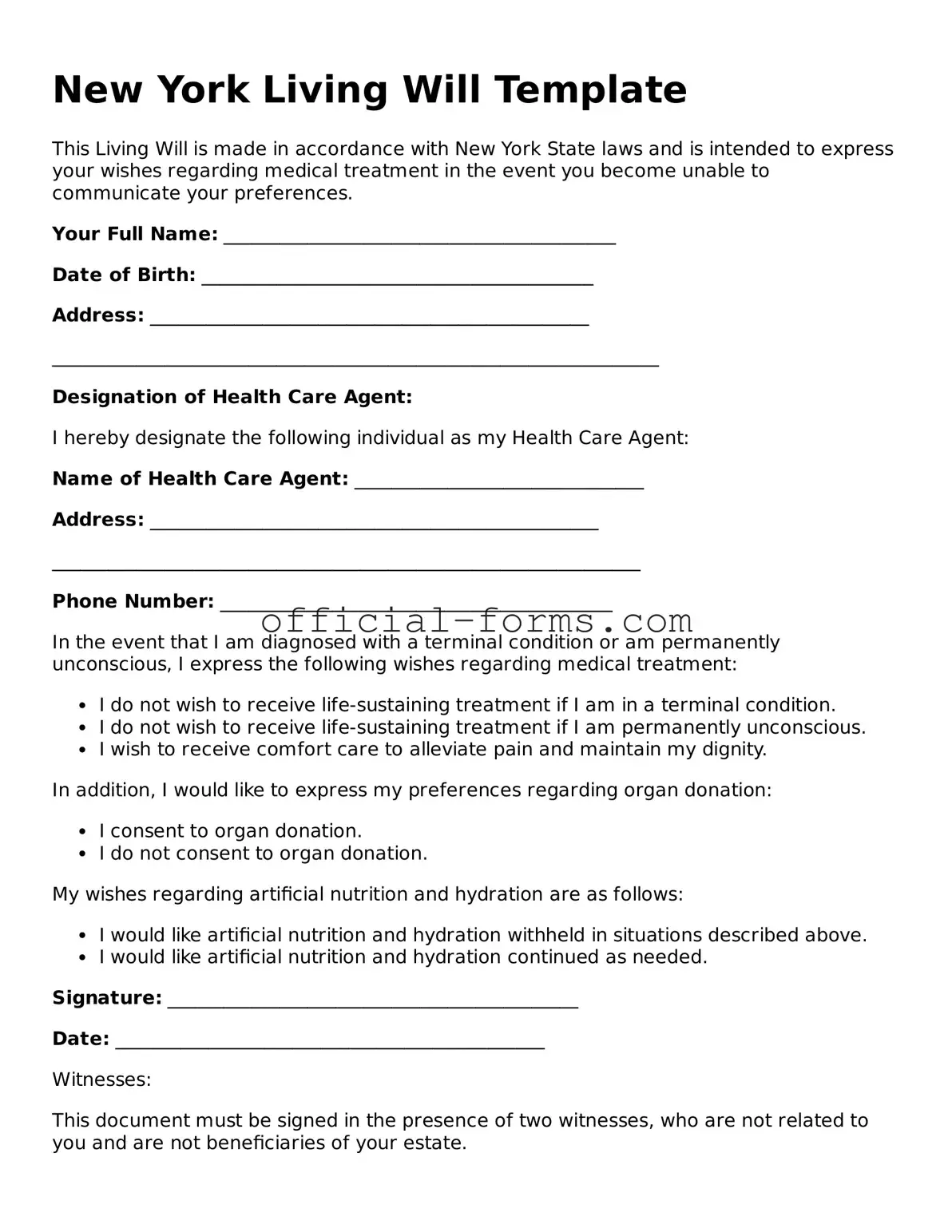Filling out a New York Living Will form is an important step in planning for your future healthcare needs. However, many people make mistakes that can lead to confusion or even legal issues later on. Understanding these common pitfalls can help ensure that your wishes are clearly communicated.
One frequent mistake is not being specific enough about medical treatment preferences. When individuals simply state that they do not want life-sustaining treatment, it can create ambiguity. Instead, it is crucial to detail what types of treatments you do or do not want. For example, specify whether you want to refuse resuscitation, artificial nutrition, or other specific interventions.
Another common error is failing to sign the document correctly. A Living Will must be signed and dated to be valid. Some individuals overlook this step or forget to include a witness. In New York, the form needs to be signed in the presence of at least one witness who is not a family member or a healthcare provider. This requirement is often neglected, which can invalidate the document.
People also tend to forget to review and update their Living Will. Life circumstances change, and so do preferences regarding medical care. Regularly revisiting your Living Will ensures that it reflects your current wishes. Failing to do so can lead to situations where outdated preferences are followed instead of your true intentions.
Another mistake is not discussing the Living Will with family members or healthcare proxies. It is important to communicate your wishes to those who may be involved in your care. Without this discussion, loved ones may not understand your preferences, leading to conflicts during critical moments. Open communication can prevent misunderstandings and ensure that your wishes are honored.
Lastly, some individuals make the mistake of assuming that a Living Will is the same as a Power of Attorney for healthcare. While both documents are important, they serve different purposes. A Living Will outlines your wishes regarding medical treatment, while a Power of Attorney designates someone to make healthcare decisions on your behalf if you are unable to do so. It's essential to understand these differences and consider having both documents in place.
